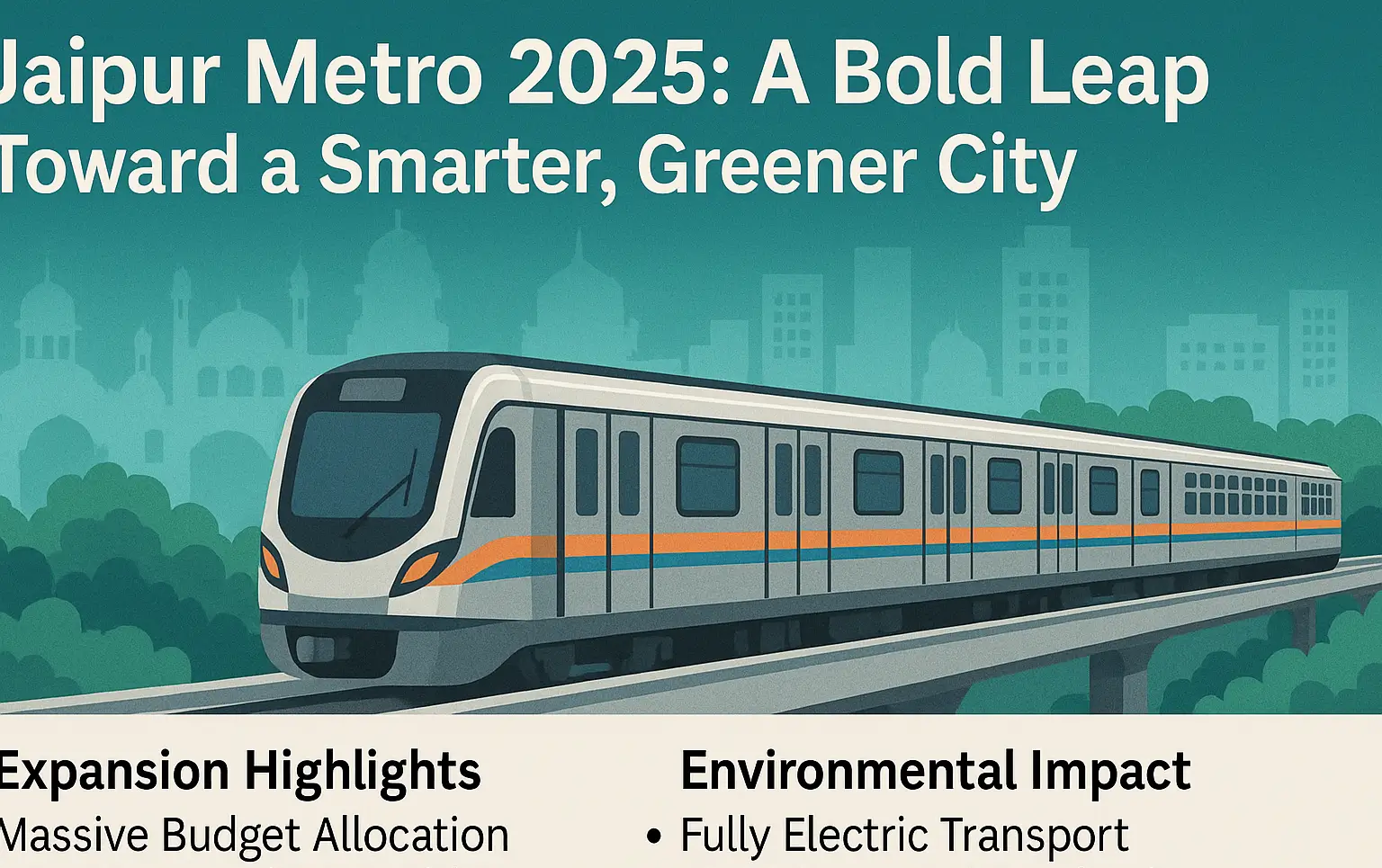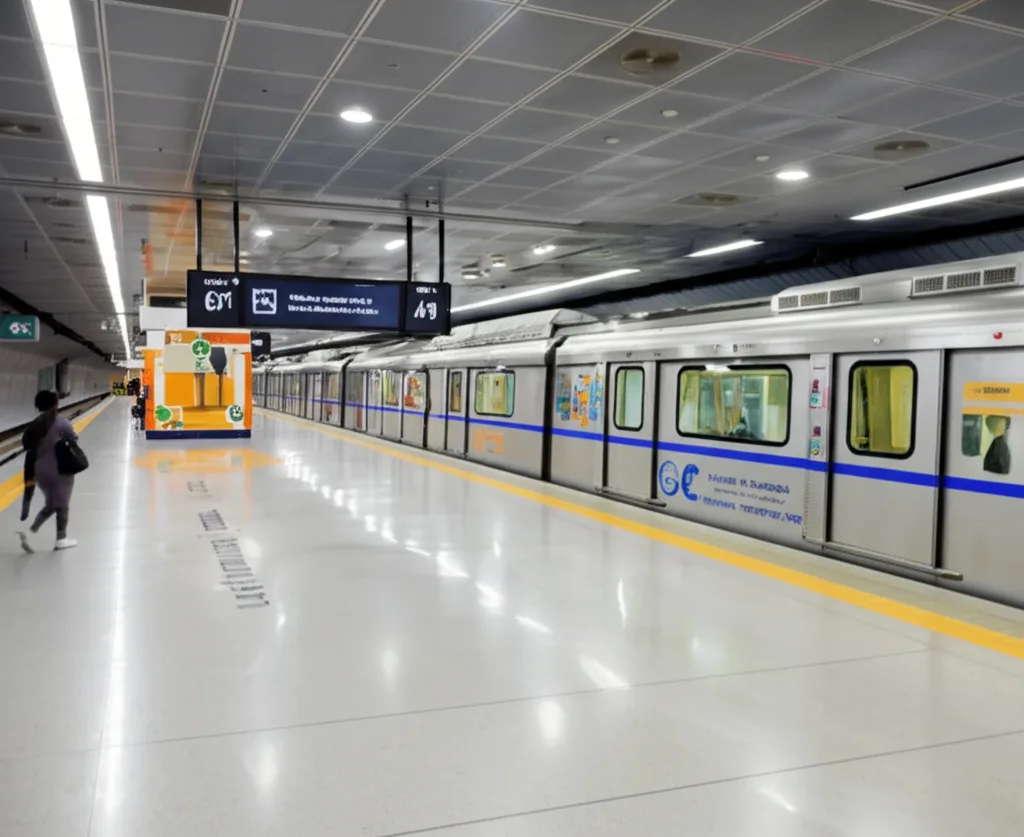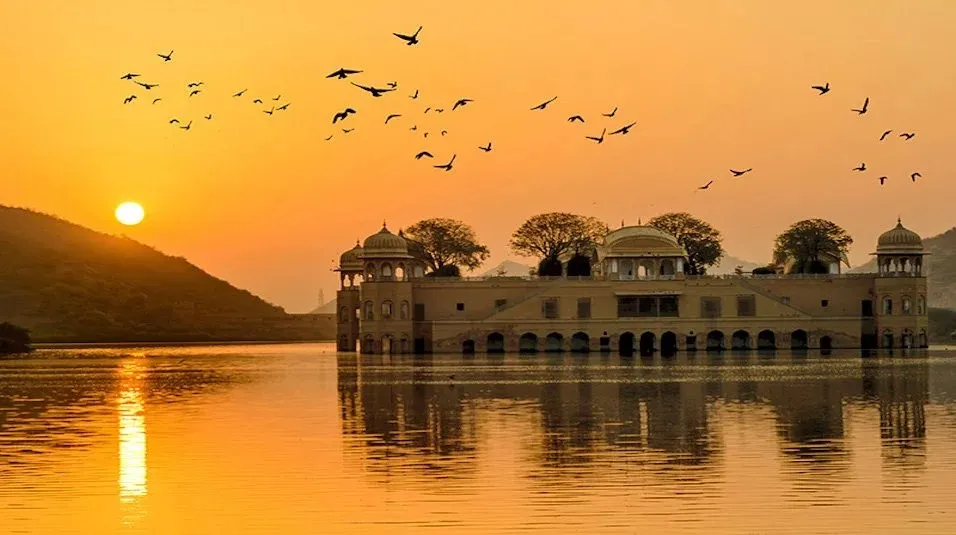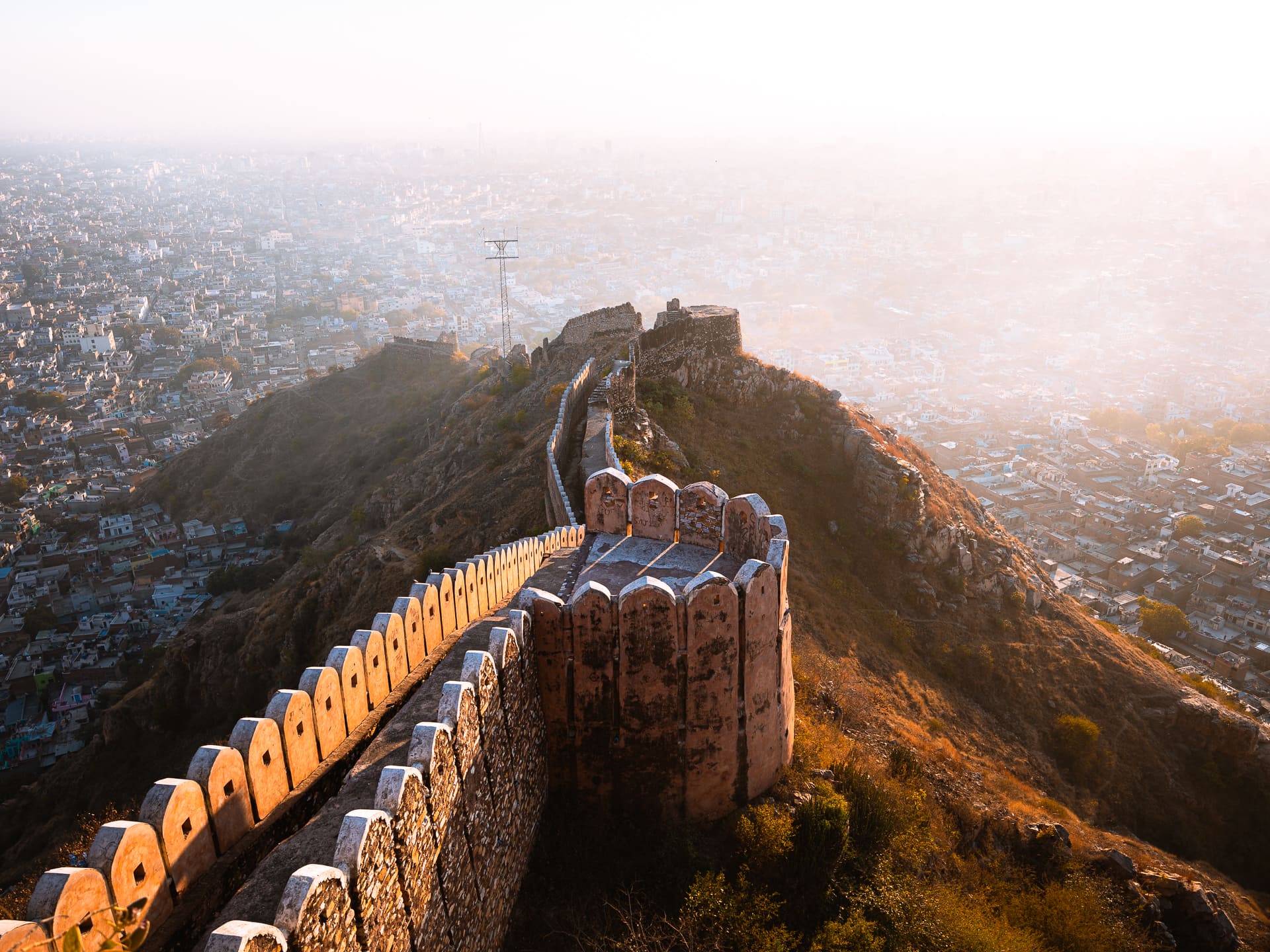Jaipur Metro 2025: A Bold Leap Toward a Smarter, Greener City

Jaipur’s Urban Growth Demands Smarter Transport
Jaipur, known globally for its historic architecture and vibrant culture, is quickly becoming one of India’s most promising urban centers. But with this growth comes the challenge of managing increased traffic, pollution, and daily commute stress. To address these issues, the Jaipur Metro Rail Corporation (JMRC) is rapidly expanding its network, making 2025 a landmark year in public transport development for the city.
What began as a single line project has evolved into a city-wide vision to connect old and new Jaipur, streamline public transport, and promote sustainable development. The new phases of Jaipur Metro are expected to reshape how people live, work, and travel in the Pink City.
2025 Expansion Highlights
In early 2025, the Rajasthan government announced a major push for Jaipur Metro expansion, including new corridors, station upgrades, and an overall improved passenger experience. Here’s what’s in store:
- Massive Budget Allocation: ₹12,000 crore sanctioned for metro expansion across multiple phases.
- New Orange Line Corridor: Connecting Ambabari to Sitapura Industrial Area, covering 23.5 km with 21 stations.
- Focus on Accessibility: New stations will include escalators, elevators, and ramps for elderly and differently-abled citizens.
- Digital Upgrades: QR-code based ticketing, real-time train updates, and app-based journey planners in development.
- Safety Enhancements: Platform screen doors, AI-monitored surveillance, and increased metro police presence.
Why Jaipur Needs This Now
Jaipur’s roads are becoming increasingly congested with over 45 lakh registered vehicles in 2025. Daily commuters often spend over an hour navigating bottlenecks, especially in the Walled City and Sitapura belt. The expanded metro aims to:
- Reduce pressure on major roads and highways
- Lower the city’s carbon footprint by promoting clean electric transport
- Provide affordable, fast alternatives to auto-rickshaws and cabs
- Encourage carpooling and last-mile connectivity integration
More importantly, the metro will help shift public habits toward sustainable transportation, in line with India’s urban smart city goals.
The Orange Line: Connecting Jaipur North to South
Among the most ambitious projects this year is the Orange Line, a fully integrated north-south corridor that connects the working class and industrial zones of Sitapura to Ambabari’s dense residential areas.
This corridor will ease travel for thousands of factory workers, students, and local businesses. It will also provide seamless access to:
- Jaipur International Airport
- SMS Hospital and major healthcare centers
- Mansarovar, Malviya Nagar, and Tonk Road residential pockets
- Tourist landmarks such as City Palace and Jantar Mantar
Construction & Timeline
The construction of Phase 2 is expected to begin in late 2025 after final approvals from the Central Government. RITES submitted the draft Detailed Project Report (DPR) earlier this year, and final revisions are currently underway based on suggestions from Rajasthan’s Chief Minister Bhajan Lal Sharma.
Meanwhile, extension projects under Phase 1C (Badi Chaupar to Transport Nagar) and 1D (Mansarovar to 200 Ft. Bypass) are also in focus. Though some delays have occurred due to budgetary reviews, public pressure and increasing daily footfalls are pushing authorities to act swiftly.
Jaipur Speaks: What Citizens Think
“We’ve waited years for metro connectivity to Sitapura. This is a lifeline for us factory workers who otherwise rely on shared vans or long-distance buses,” says Ram Kishore, an employee in the textile zone.
College student Priya Meena shares, “I live near Gopalpura Bypass, and if the Orange Line touches this area, it would save me over 30 minutes every day.”
Local shopkeepers around Chandpole have also reported increased foot traffic since metro lines opened in the area, showing how public transport boosts local economies.
Metro & the Environment
As a fully electric mass transit system, Jaipur Metro plays a vital role in reducing air pollution. The expanded network is expected to:
- Eliminate thousands of daily vehicle trips
- Cut down carbon emissions by an estimated 15,000 tons annually
- Support Jaipur’s goal to become a top-10 clean city in India by 2027
Metro stations are also being designed with solar panel integration and water harvesting systems, making them smarter and more sustainable.
What Lies Ahead?
Looking beyond 2025, JMRC plans to integrate Jaipur Metro with regional bus systems and possibly even electric rickshaw networks. Unified ticketing and a single app for all urban transport are already being piloted. If successful, Jaipur could become a model for mid-sized Indian cities looking to modernize urban travel.
Real estate near metro corridors is already seeing rising interest, with developers promising “metro-view” apartments and co-working hubs. Schools, hospitals, and commercial centers are also likely to emerge closer to metro stations in the coming years.
Final Word: Metro is Not Just a Project — It’s a Movement
The Jaipur Metro is more than an infrastructure project — it’s a step toward modern, inclusive, and future-ready urban living. As more Jaipurites embrace the metro for their daily journeys, the city moves closer to becoming truly connected — from its royal heritage to its rising skyline.
🔗 Stay Informed
To check live metro routes, construction updates, and fare calculators, visit the official website of Jaipur Metro Rail Corporation (JMRC).


